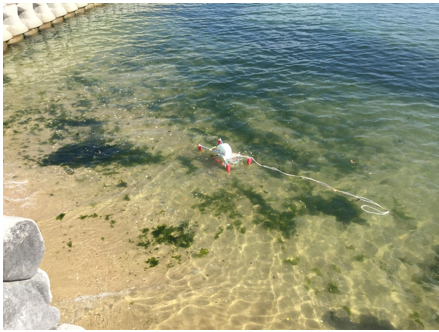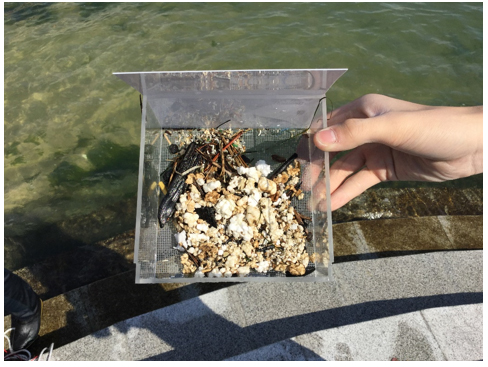Newsletter 2017.2 Index
Theme : "The Conference of Fluid Engineering Division"
|
Developing “Dream Strider”, a machine for the removal of floating materials on the water surface
Kota TSUBONE |
Abstract
Micro-plastics and spilled oil are two major sources of marine pollution that require immediate remediation. Noxious chemicals tend to quickly adhere to micro-plastics. When fish eat these micro-plastics, the noxious chemicals enter the food chain, negatively impacting humans. Furthermore, oil disasters such as the Nakhodka oil spill in the Sea of Japan in 1997 and the Deepwater Horizon oil spill in the Gulf of Mexico in 2010 are also examples of major sources of water pollution. These problems have motivated us to find a way to contribute to remediation of marine environments.
Our school physics club began fundamental research in support of the current research project in 2011. Our fundamental research revealed that the projection of a water jet from under the water surface into the air can be used to remove floating contaminants from the water surface in major bodies of water. First, a water tank was filled, and a water jet was projected from under the water surface into the air. The water for the water jet was supplied from outside the tank. The water jet caused the volume of water in the tank to decrease [Fig. 1] because the surrounding water was pulled toward the water surface and transported into the air. We realized that this phenomenon could be applied to the removal of floating contaminants from the water surface in major bodies of water through the development and use of an easily constructed, cost-efficient, and eco-friendly device.
The physics club began research regarding the removal of floating contaminants in 2013. Figure 2 illustrate the collection of garbage using a water jet. When the jet was projected from underwater and onto a receiving board, the garbage was transferred onto the board by the water jet and then into a garbage collection tank. The result of this research was the development of a basic experimental setup that was able to successfully remove garbage from the water surface.
We constructed a machine “Dream Stride” for real-world experiments. [Fig. 3] We conducted five real-world experiments using “Dream Stride” in the moat of Hiroshima Castle and on the coast of the Seto Inland Sea. [Fig. 4] We succeeded in collecting microplastics and floating materials. [Fig. 5]
Key words
Water-jet, Water’s surface, Marine pollutants, Microplastics, Oil
Figures

Fig. 1 Water transport phenomenon.

Fig. 2 Schematic diagram of “Dream Strider”.

Fig. 3 Dream Strider.

Fig. 4 Real-world experiments conducted using “Dream Strider”.

Fig. 5 Sea contaminants.


